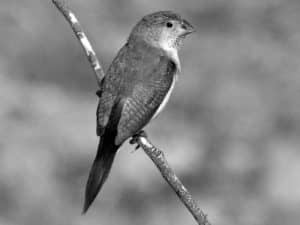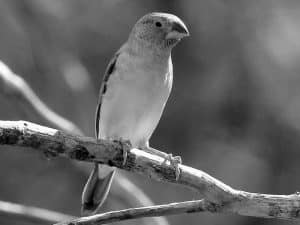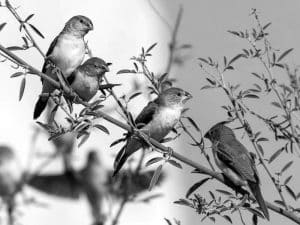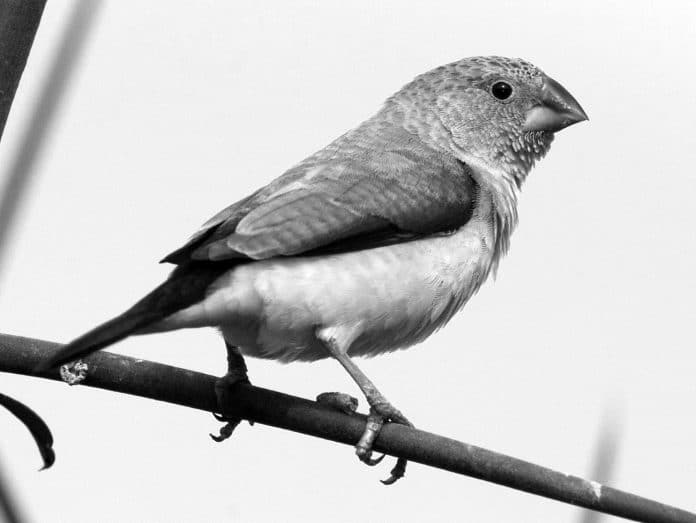Introduction to the African Silverbill
The African silverbill, scientifically known as Euodice cantans, is a small, captivating bird species native to parts of Africa, including Tanzania. With its striking silver-gray plumage, delicate features, and enchanting song, the African silverbill in Tanzania has long captured the hearts of birdwatchers and nature enthusiasts alike. As you embark on your exploration of Tanzania’s diverse avian wonders, the opportunity to witness the African silverbill in its natural habitat is a truly remarkable experience.
Habitat and Distribution of the African Silverbill in Tanzania

The African silverbill thrives in the arid and semi-arid regions of Tanzania, primarily found in the central and northern parts of the country. These small birds prefer open woodlands, savannas, and areas with a mix of grasslands and scattered bushes, where they can easily forage for their preferred diet of seeds and small insects.
In Tanzania, the African silverbill’s range extends from the Serengeti National Park in the north to the Ruaha National Park in the south, with sightings also reported in the Tarangire National Park and the Ngorongoro Conservation Area. As you explore these stunning natural landscapes, keep your eyes peeled for the delicate movements and silvery hues of the African silverbill as it flits from one perch to another.
Physical Characteristics and Behavior of the African Silverbill
The African silverbill is a small bird, typically measuring between 10-12 centimeters in length and weighing around 10-12 grams. Its most distinctive feature is its striking silver-gray plumage, which covers its entire body, including its wings and tail. The bird’s beak is short and conical, perfectly adapted for cracking open small seeds and grains.
When it comes to behavior, the African silverbill is a social species, often seen in small flocks foraging and traveling together. These birds are known for their melodious, warbling songs, which they use to communicate with one another and establish their territory. During the breeding season, you may witness the male African silverbill performing a captivating courtship display, fluttering its wings and singing to attract a mate.
Conservation Status and Threats to the African Silverbill
The African silverbill is currently classified as a species of “Least Concern” on the International Union for Conservation of Nature (IUCN) Red List of Threatened Species. However, like many bird species, the African silverbill faces a range of threats that could potentially impact its long-term survival.
One of the primary threats to the African silverbill is habitat loss and degradation, as the expansion of agriculture, urbanization, and overgrazing can reduce the availability of suitable breeding and foraging areas. Additionally, the illegal pet trade and the use of pesticides can also pose risks to the species’ population.
To ensure the continued preservation of the African silverbill in Tanzania, conservation efforts focus on protecting the bird’s natural habitats, regulating the pet trade, and promoting sustainable agricultural practices that minimize the impact on the local ecosystem.
Birdwatching Opportunities in Tanzania: Where to Spot the African Silverbill

Tanzania is a renowned birding destination, offering countless opportunities to observe a diverse array of avian species, including the captivating African silverbill. As you plan your birdwatching adventure in Tanzania, consider the following locations as prime spots to catch a glimpse of these stunning birds:
- Serengeti National Park: The vast grasslands and savannas of the Serengeti provide an ideal habitat for the African silverbill, and visitors often report sightings of these birds throughout the park.
- Tarangire National Park: The diverse ecosystems of Tarangire, including its acacia woodlands and open grasslands, are home to thriving populations of African silverbills.
- Ngorongoro Conservation Area: The Ngorongoro Crater and the surrounding highlands are known to be excellent locations for spotting the African silverbill, as well as a wide variety of other bird species.
- Ruaha National Park: Situated in the southern part of Tanzania, Ruaha National Park is a hidden gem for birdwatchers, offering opportunities to observe the African silverbill and many other unique bird species.
Remember to bring your binoculars, camera, and a field guide to help you identify the African silverbill and other fascinating birds you may encounter during your Tanzania adventure.
Tips for Photographing the African Silverbill in Tanzania
Capturing the beauty of the African silverbill through photography can be a rewarding and challenging experience. Here are some tips to help you make the most of your photographic opportunities:
- Patience and Stealth: The African silverbill is a relatively small and skittish bird, so approach it slowly and quietly to avoid startling it. Be prepared to wait patiently for the perfect moment to capture your shot.
- Lighting and Composition: Aim to shoot during the golden hours of early morning or late afternoon, when the light is soft and warm, highlighting the silverbill’s delicate features. Experiment with different compositions, such as capturing the bird in flight or perched on a branch.
- Telephoto Lens: Equip yourself with a telephoto lens, preferably one with a long focal length, to get close-up shots of the African silverbill without disturbing its natural behavior.
- Camouflage and Concealment: Blend in with your surroundings by wearing neutral-colored clothing and using natural camouflage to minimize your presence and increase your chances of getting close to the birds.
- Patience and Practice: Photographing the African silverbill requires a great deal of patience and practice. Be prepared to spend time observing the birds, learning their behaviors, and honing your photography skills to capture the perfect shot.
Other Bird Species Found in the Same Habitat as the African Silverbill
While the African silverbill is the star of this article, the habitats it shares with other fascinating bird species in Tanzania are equally worth exploring. As you venture into the savannas, woodlands, and grasslands where the silverbill thrives, keep an eye out for these other avian wonders:
- Superb Starling: A vibrant, iridescent bird with a striking blue and purple plumage.
- Yellow-billed Hornbill: A charismatic bird with a large, distinctive beak and a unique, cackling call.
- Lilac-breasted Roller: A stunning bird with a kaleidoscope of colors, including shades of blue, green, and purple.
- Kori Bustard: The world’s heaviest flying bird, known for its impressive size and majestic appearance.
- Cattle Egret: A small, white heron that often accompanies grazing livestock, feeding on the insects they disturb.
Observing the diverse array of bird life that coexists with the African silverbill will undoubtedly enhance your appreciation for the rich biodiversity of Tanzania’s natural landscapes.
Interesting Facts and Trivia about the African Silverbill

As you deepen your understanding of the African silverbill, consider these fascinating facts and trivia about this captivating bird species:
- Vocal Virtuoso: The African silverbill is known for its melodious, warbling song, which can be heard throughout the day as the birds communicate and establish their territories.
- Monogamous Mating: These birds form monogamous pairs during the breeding season, working together to build nests and raise their young.
- Nest Construction: The African silverbill constructs its nest using a variety of materials, including grass, feathers, and even human-made items like cotton or string.
- Adaptable Diet: While the silverbill’s primary diet consists of small seeds and grains, it is also known to supplement its meals with small insects and spiders.
- Widespread Distribution: The African silverbill is found not only in Tanzania but also in other parts of Africa, including Ethiopia, Sudan, and parts of the Middle East.
These fascinating facts about the African silverbill’s behavior, ecology, and distribution will undoubtedly enrich your appreciation for this captivating bird species.
The Role of the African Silverbill in Ecosystems
The African silverbill plays a vital role in the delicate balance of the ecosystems it inhabits. As a seed-eating bird, the silverbill helps to disperse the seeds of various plant species, contributing to the regeneration and diversification of the local vegetation.
Additionally, the silverbill serves as an important food source for larger predatory birds, such as raptors and owls, as well as small mammals and reptiles. By maintaining a healthy population, the African silverbill helps to support the overall biodiversity of the region, ensuring the continued flourishing of the intricate web of life that defines the natural landscapes of Tanzania.
Conclusion: Preserving the Beauty of the African Silverbill in Tanzania
The African silverbill is a true gem of Tanzania’s avian wonders, captivating birdwatchers and nature enthusiasts with its striking appearance and enchanting song. As you explore the diverse habitats of this East African nation, take the time to immerse yourself in the beauty and wonder of the African silverbill, and consider the crucial role it plays in the delicate balance of the local ecosystems.

































